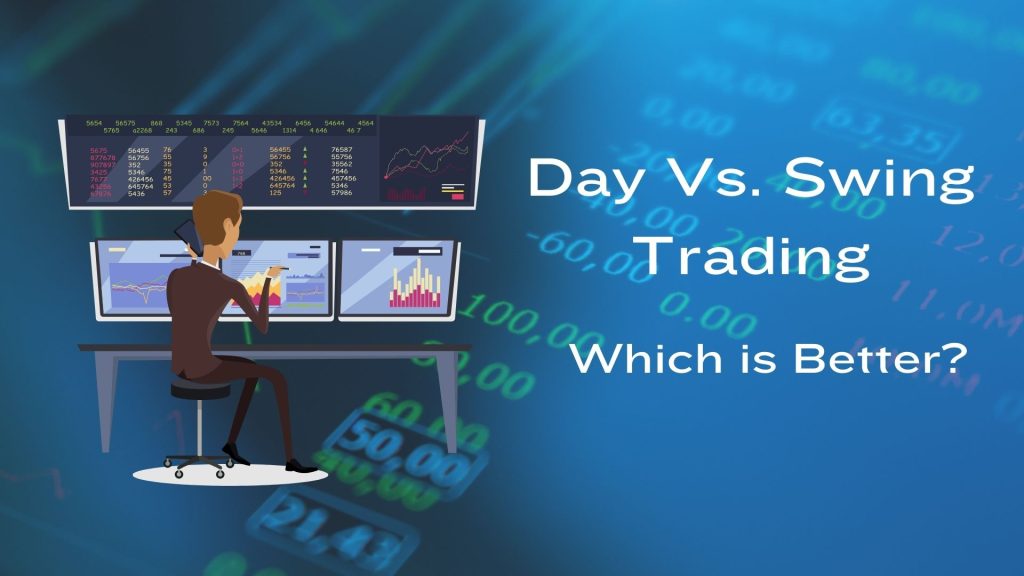
Day Vs. Swing Trading in Forex – Which is The Best?
Forex trading involves the exchange of global currencies in the financial markets. It is a decentralized global market to trade all the world’s currencies. Day Trading and Swing Trading are two popular trading styles in Forex. Each serves different trader preferences regarding time commitment, risk tolerance, and potential gains.
What is Day Trading?
Day Trading in Forex involves buying and selling currency pairs within the same trading day. Traders capitalize on small price movements and close all positions by the end of the trading session. A day trader rapidly analyses and executes trades daily, monitoring multiple screens and reacting to market news and events as they happen. They often work during peak market hours to exploit high volatility.
Day trading requires quick decision-making and strong analytical skills. Traders must respond swiftly to market changes to maximize gains or minimize losses, often making multiple trades daily.
Connect with a large network of professionals and optimally utilise the financial market. Find your perfect liquidity partners!
What is Swing Trading?
In Swing Trading, trades are held for several days to capitalize on expected upward or downward market shifts. This style differs from day trading by targeting gains from short to medium-term trends. Swing traders usually hold positions for a few days to a few weeks. They aim to capture ‘swings’ or significant price moves occurring over more extended periods.
This trading style emphasizes technical analysis and market trends. Swing traders often use historical data and charts to predict future price movements. They rely less on the fast-paced, minute-to-minute changes that day traders focus on.
Day Vs. Swing Trading
These are the main differences between day trading and swing trading:
Time Commitment
Day Trading requires continuous market monitoring throughout the trading day to capitalize on intra-day price movements.
Swing Trading allows for a more flexible schedule with less frequent monitoring. It is suitable for those who cannot constantly watch the markets.
Risk and Reward
Day Trading involves higher risk due to rapid trading and leveraged positions. It can amplify both gains and losses.
Swing Trading generally entails less risk as positions are held over longer periods. It aims for gradual gains that can mitigate some of the market volatility.
Skill and Experience Required
Due to the fast-paced nature of the trading style, Day Trading requires intense focus, quick reflexes, and the ability to handle stress.
Swing Trading requires patience, a strong understanding of market trends, and the ability to hold positions through market fluctuations. It also benefits from a more analytical approach.
Profitability and Suitability
Day Trading may offer quick profits but requires a significant time investment and higher capital. It is more demanding and potentially stressful.
Swing Trading can be more suitable for those with less time to dedicate daily and typically requires less capital. It offers a more relaxed trading approach with fewer transactions.
Conclusion
Both swing trading and day trading have their advantages and challenges. Traders must choose the trading style that suits their goals, risk tolerance, and available time.
Contact us now and promote your business efficiently!
Follow us on LinkedIn to get daily financial updates!





